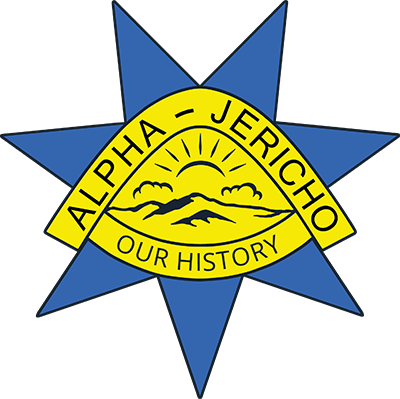On 22 June 1863, Arthur Hunter Palmer [i] applied for licences on twelve runs in the Belyando River basin; nine of which were leased to form the core of his consolidated holding called Beaufort. Following dry years, he forfeited six of the runs in 1869, to re-lease most of them in more favourable seasons, generally at a lower rental rate.
Although none of the original runs were licensed as Beaufort, Arthur Palmer used this distinctive name from 1864, perhaps chosen in honour of Sir Francis Beaufort, who devised the Beaufort wind force scale; perhaps in recognition of the explorer Sir Thomas Mitchell, who had named a mountain in the vicinity Mt Beaufort when exploring in the Belyando basin in 1846.[ii]
Born in Armagh, Ireland, Arthur Palmer arrived in Sydney in 1838 as a 19 year old. From 1840, he worked on Henry Dangar’s New England pastoral properties, rising to become general manager of the Dangar estate in 1856. By this time, he had accumulated sufficient funds to move north searching for land of his own.
Arthur Palmer was an active, if often absent, land holder, particularly in Beaufort’s first decade. Six weeks after he had applied for the runs, he searched during ten days for sheep that had escaped from the shepherds’ care. Heavy rain interrupted the search when 70 sheep remained missing. Shearing in October -November was the time of the year he preferred to spend at Beaufort. [iii]
He was very interested in the construction and use of a washpool to wash sheep before they were shorn. From late August until early December 1969, he was at Beaufort to oversee the washing, shearing and loading of the wool. That year, the wash pool was greatly improved with the installation of engines and boilers to provide for hot water washing. It was ready to start washing on 29th October and on that day he was very pleased with the result describing the sheep as being ‘as white as snow’. He expected to be able to wash from 1700 to 1800 sheep every day and often met his target with 18,000 sheep washed by 12 November. Much of the hard work at the washpool was completed by South Sea Islanders, whose efforts Arthur Palmer admired.
The shearing started later: some of the shearers did not sign on with the wages Arthur Palmer was willing to pay, 4/- for 20 sheep, from which the men had to purchase their shears, rations and other necessities. However by 19th November, 20,000 had been shorn. While Arthur Palmer was satisfied with the colour of the washed wool, the process was not able to get rid of all the grass seed. The baled wool was carted to Rockhampton for transport to sales in London where he expected it would bring a good price.
During these months, it was not all hard work on Beaufort. At the end of September, a band of six men played for them for several hours in the evening. They had walked from Victoria and intended continuing to the Gilbert gold diggings in north Queensland. The station was also visited by a wandering artist who sketched several pen and ink drawing of the homestead and outstations.
[i] Haskell, F, Sketch of Sir Arthur Hunter Palmer, Neg 167307, No 182007, State Library of Queensland, http://www.slq.qld.gov.au/
[ii] Thomas Mitchell, Journal of an expedition into the interior of tropical Australia, web edition, eBooks@Adelaide, 2014, Chapter VI, https://ebooks.adelaide.edu.au .
[iii] Many details are revealed in the correspondence of Arthur Hunter Palmer in Sir Thomas McIllwraith Papers, 1839-1897, 1863, 1869 and 1877, OM64-19, Queensland State Library.
< Go Back
